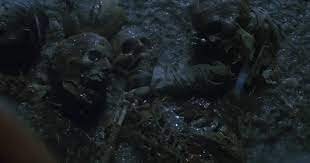The 1982 Movie Poltergeist Used Real Skeletons as – Tymoff
Introduction
The world of cinema is often a realm of fantasy, where filmmakers use their creative prowess to bring stories to life. However, sometimes the line between fiction and reality can blur, leading to shocking revelations that leave audiences both fascinated and disturbed. Such is the case with the 1982 horror classic, “Poltergeist,” a film that has intrigued film enthusiasts for decades due to the unsettling rumor that real skeletons were used during its production. In this article, we delve into the origins of this macabre tale, the controversy it sparked, and the enduring legacy of the film. The 1982 Movie Poltergeist Used Real Skeletons as – Tymoff
Setting the Scene : The 1982 Movie Poltergeist Used Real Skeletons
Released in 1982 and directed by Tobe Hooper, “Poltergeist” follows the eerie events that unfold when a suburban family’s home is invaded by malevolent supernatural forces. The film was widely praised for its innovative special effects, captivating storytelling, and bone-chilling suspense. However, it wasn’t long before rumors began to circulate, suggesting that real skeletons were used in the movie, adding a layer of genuine horror to the already terrifying tale.
Unearthing the Truth
The rumor that “Poltergeist” employed actual human skeletons was fueled by a handful of factors. One of the most significant contributors was the accessibility of medical-grade skeletal remains at the time. It was common practice for medical institutions and universities to acquire human skeletons for educational purposes. These remains often found their way into various industries, including film production, as they provided a realistic and cost-effective solution for crafting intricate sets.
Additionally, reports from cast and crew members further fueled the speculation. According to various sources, including actress JoBeth Williams, who portrayed the mother in the film, some of the props used in the iconic pool scene were allegedly real human skeletons. This revelation shocked both the cast and the public, casting a dark shadow over the film’s production. The 1982 Movie Poltergeist Used Real Skeletons as – Tymoff
Facing the Controversy
The alleged use of real skeletons sparked outrage among many viewers who felt that it was unethical and disrespectful to the deceased. The controversy forced the filmmakers to address the issue, with director Tobe Hooper and producer Steven Spielberg clarifying the matter. They stated that the remains used were, in fact, not real human skeletons, but rather synthetic replicas created by a professional anatomical model maker. The production team aimed to achieve realism while adhering to ethical considerations, and they asserted that no human remains were used during the filming.
Read more: Why You Should Invest in Plant and Equipment Insurance?
Legacy and Impact
Despite the controversy, “Poltergeist” remains a staple in the horror genre and a testament to the filmmakers’ ability to create suspenseful and chilling narratives. The film’s legacy has transcended its production rumors, and it continues to be celebrated for its contribution to the horror film canon. While the speculation about the use of real skeletons initially cast a pall over its reputation, the film’s enduring popularity demonstrates the power of storytelling to captivate audiences regardless of the controversies that surround it.
Conclusion
The tale of the alleged use of real skeletons in the making of the 1982 film “Poltergeist” is a testament to the often blurred line between fiction and reality in the realm of cinema. While the controversy stirred conversation and brought attention to ethical concerns, it has not diminished the film’s impact on popular culture. “Poltergeist” serves as a reminder that the stories we see on screen can be just as captivating and chilling as the stories that emerge behind the scenes. The 1982 Movie Poltergeist Used Real Skeletons as – Tymoff

